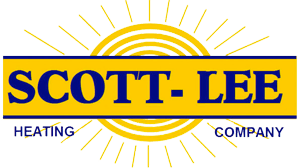March 6, 2015

Approximately 50 percent of total energy consumption can be attributed to heating and cooling.
Using an HVAC system to regulate household temperature can cost you a lot both in terms of energy bills and the carbon footprint. There are some green techniques that can help reduce your power consumption by about 20 percent. We will provide a glossary of heating and cooling terms that will help you better understand ways to go eco-friendly.
Air sealing: Treating a house to prevent leakage of internal and external air.
Ceiling fan: It can replace or supplement air conditioning and can help circulate heated air in the winter.
Energy audit: Inspection by a professional HVAC company to measure the energy efficiency of the house and suggested improvements.
Energy efficient appliances: Using appliances such as air conditioners and furnaces that have relatively low energy consumption.
Energy star: A certification issued by the U.S. Department of Energy and Environmental Protection Agency that indicates the energy efficiency.
Evaporative cooler: It uses the process of evaporation to cool air inside a house. It is suitable for dry climates and may work better than air conditioners in such areas.
Geothermal: Thermal energy generated and stored in the earth that can be tapped to run a home’s HVAC system.
Heat pump: Device that pumps cool or warm air as per the season from air, water, or earth.
High efficiency furnace: For a furnace to be rated high efficiency it should have annual fuel utilization efficiency (AFUE) of at least 90 percent. However, there are high efficiency furnaces that have an AFUE of about 98:100.
Insulation: Using materials such as spray foam and fiberglass to reduce the transfer of heat from inside the home to outside and vice versa, improving energy efficiency.
LEED certification: Leadership in Energy and Environmental Design is a rating system used for measuring the eco-friendliness of a building.
Low emissivity windows: They contain coated glass that allows in light radiation but blocks heat radiation.
Multi-pane windows: They have 2 or 3 panes and each is separated with air or gas insulation. It reduces energy wastage, noise pollution, and blocks UV rays.
Programmable thermostat: It can be pre-programmed in a way that the HVAC system maintains different temperatures at different times of the day as required.
Sealed ductwork: Sealing the seams of ductwork to reduce energy leakage.
Smart home technology: It allows systems such as the HVAC system to be operated remotely using a smart phone.
Tankless water heater: It uses electricity, propane, or natural gas to heat water as and when required. It does not require a tank for storing preheated water.
HVAC zoning: In a zoned HVAC system, there are separate thermostats for different areas of the home. It helps save energy by limiting the use of HVAC systems in parts of the home that are not in use.
St. Louis Heating and Cooling
If you are concerned about your rising energy bills, call Scott-Lee Heating Company at (314) 200-0788. We will inspect your home and recommend measures to improve energy efficiency.
